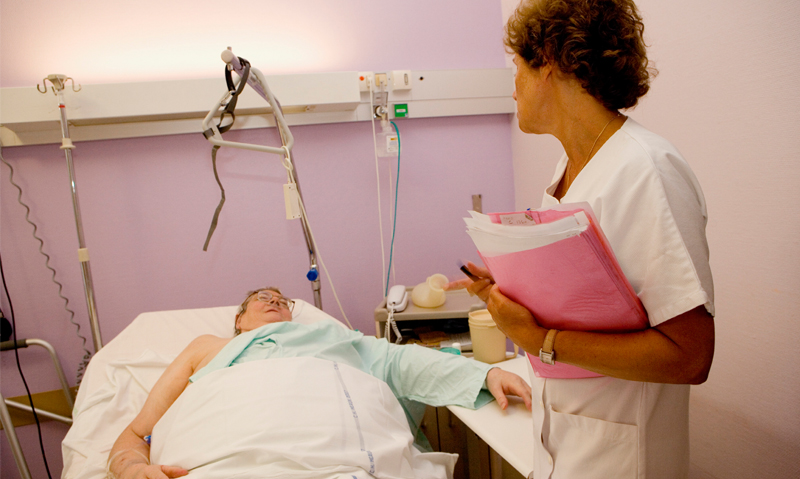ONE in four patients in Melbourne’s public hospitals has diabetes according to an audit that a leading diabetes expert says provides a “timely and important” contribution to the development of the National Diabetes Strategy. (1)
Professor Paul Zimmet, co-chair of the National Diabetes Strategy’s advisory group, said the finding was likely to be an underestimate of the burden of diabetes in public hospitals.
“Most of us have been aware of these problems for many years, and of the need for hospital administrators to recognise the burden of diabetes within the hospital system”, said Professor Zimmet, who is also a director of Baker IDI Heart and Diabetes Institute.
He told MJA InSight diabetes was likely to be the leading cause and burden of disease in Australia within the next decade.
“We need hospital administrators to apply more resources to the care of people with diabetes in hospitals. There is no question that this is very important.”
The point prevalence survey published in the MJA included 2308 adult inpatients. It determined the prevalence of diabetes in 11 Melbourne metropolitan hospitals, each on a single day between 10 November 2010 and 22 November 2012.
It found that 562 (24.7%) of inpatients had self-reported diabetes, and this figure was confirmed to be 98.7% accurate by cross-checking of medical records. Diabetes prevalence ranged from 15.7% to 35.1% in different hospitals.
The study authors called for a formal national inpatient diabetes audit to capture biochemical data to determine the true prevalence of diabetes and its consequences.
“Such an audit would allow a comprehensive assessment of this high-risk group and permit rational planning to deal with shortcomings in their management”, they concluded.
Professor Zimmet welcomed the concept of a national audit of inpatient diabetes, but warned that it would have to ensure that all cases were captured.
“It would have to be very well prepared to ensure that no one with diabetes escapes the audit and that hospitals are geared to be testing every person who potentially may have diabetes, even before they go into an operating theatre.”
He said it was not unusual for a patient’s diabetes to be discovered after undergoing a surgical procedure or being admitted for an unrelated illness. “These people are at a much greater risk of infection postoperatively and/or longer hospital stays. So there’s a lot of work that needs to be done to raise the level of diagnosis and care of diabetes in hospitals, if you are going to get accurate audits.”
The Melbourne audit also revealed that 82.2% of the hospitalised patients with diabetes reported at least one microvascular or macrovascular complication. The researchers said that limited local data suggested that glycated haemoglobin (HbA1c) was significantly improved in patients managed by “advanced skill GPs” supported by an endocrinologist and diabetes educator.
Professor Mark Harris, professor of general practice at the University of NSW and executive director of the University’s Centre for Primary Health Care and Equity, said the study was a useful reminder of the burden of diabetes in hospitalised patients.
However, he said these patients represented only a proportion of the diabetes patients managed in the community.
“You’re seeing a jaundiced picture if you like, looking at the complicated end of things — because you have to be complicated to get admitted to hospital”, Professor Harris told MJA InSight.
The audit identified patients who had “fallen through the cracks”. “It may be that their primary care providers are missing screening, but it may also be that they’re not getting adequate primary care … they are not seeing the same provider regularly and that’s the underlying problem.”
Professor Harris said the federal-government-funded Diabetes Care Trial, which was wrapped up earlier this year but is yet to report its findings , was investigating approaches to improve community care of diabetes patients.
Professor Stephen Twigg, Kellion professor of endocrinology and Stan Clark Chair of Diabetes at Sydney Medical School, said the high rate of diabetes-related complications reported in the Melbourne audit contrasted with a far lower rate of diabetes-related complications in the community.
“The patient with diabetes in the hospital setting is often much sicker than a patient with diabetes in the community. We know from Diabetes Centres audit data that [about 60%] of people with diabetes in the community do not have even one diabetes-related complication”, he said.
The Melbourne audit also showed that insulin therapy was commonly required by hospitalised patients with diabetes and this could present further challenges in the hospital system.
“Insulin can be associated with risks of low blood glucose [and] people in hospital are often fasting or they’re on unusual diets, so I think it does reflect that there is great demand for adequate service provision for people with diabetes in a hospital setting”, Professor Twigg said.
(Photo: B. Boissonnet / Science Photo Library)

 more_vert
more_vert